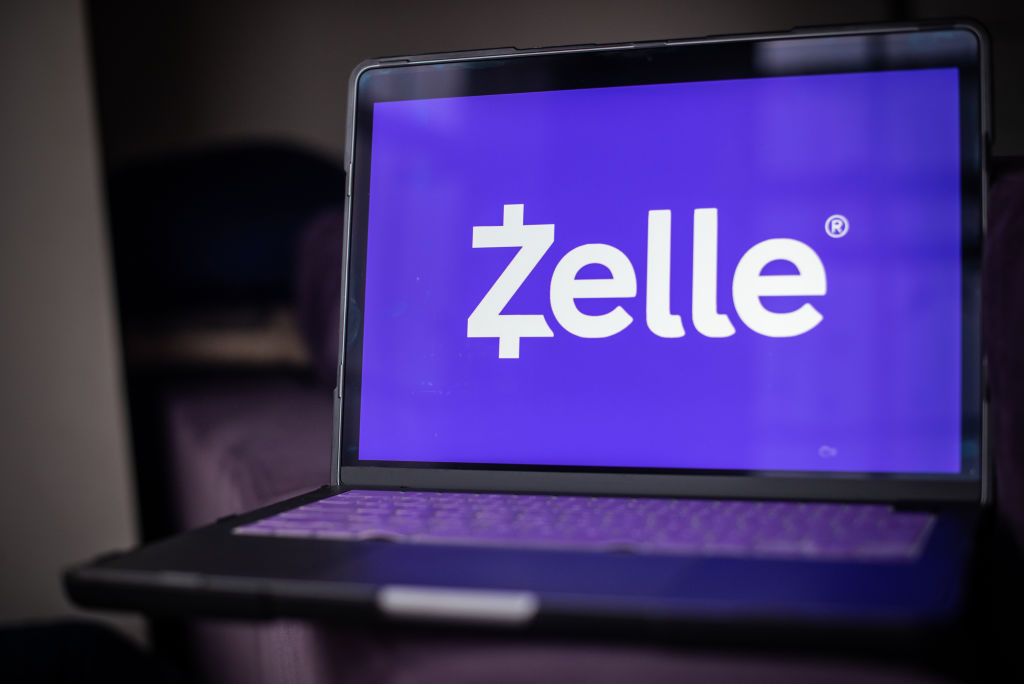Bond Basics: U.S. Savings Bonds
Safety and tax advantages are the strong points of these investments.


Bonds help diversify your portfolio and limit your exposure to risk. But they can be complicated. We can help you understand the basics of savings bonds and make them work for you.
Safe and secure
Savings bonds are backed by the full faith and credit of the U.S. government. Payment of the interest and principal is guaranteed. Savings bonds are non-transferable, which means you can't sell them to someone else. You can redeem them at anytime. But, if you own the bond for less than five years, you will lose the last three months of interest earned.
Savings bonds will never be worth less than their face value, also known as par value. At maturity, you will receive the full par value regardless of market conditions or interest rate changes.

Sign up for Kiplinger’s Free E-Newsletters
Profit and prosper with the best of expert advice on investing, taxes, retirement, personal finance and more - straight to your e-mail.
Profit and prosper with the best of expert advice - straight to your e-mail.
Tax advantaged
Interest earned from savings bonds is exempt from all state and local income taxes. The exemption doesn't extend to federal taxes, but the earning could be exempt if you use funds to pay for qualified education expenses and your income doesn't exceed the limit for the exclusion.
Education exclusion and qualified expenses
Interest earned on savings bonds can be excluded from federal taxes when used for qualified education expenses paid for you, your spouse, or a dependent at a qualified postsecondary institution. Eligible expenses must be incurred during the same tax year in which eligible bonds are redeemed. The amount of eligible expenses is reduced by the amount of any scholarships, fellowships, employer-provided educational assistance, and other tuition reduction the student receives.
Who is eligible for the education exclusion? To be eligible for the education exclusion, the bond must have been issued to the owner after the owner reached age 24. If you are considering using I bonds to fund education savings, you should do so by purchasing the bonds in your name, not in the child’s name.
Income limitations also apply. For 2023, the exclusion is reduced when modified adjusted gross income (MAGI) exceeds $137,800 if married filing jointly and $91,850 for all other filers. The exclusion is eliminated when MAGI reaches $167,800 if married filing jointly and $106,850 for all other filers. These are 2023 limits and are adjusted yearly for inflation.
The exclusion is not available to married taxpayers filing separately, if the student was gifted the savings bonds or the bonds were purchased in the student’s name before the student reached age 24.
What qualifies as an eligible educational institution? Post-secondary institutions, including vocational schools that meet the standards for federal assistance, such as guaranteed student loan programs, qualify.
What educational expenses qualify for the interest exclusion? Eligible educational expenses include tuition and fees, lab fees and other course expenses required for the enrollment of or attendance. Expenses relating to any course or other education involving sports, games, or hobbies are eligible only if required as part of a degree or certificate-granting program.
What costs aren’t considered qualified expenses? The costs of room, board and books.
Types of savings bonds
There are three types of savings bonds in circulation EE bonds, I bonds and HH bonds. HH bonds are no longer available for purchase.
There are two types of savings bonds sold by the Treasury: EE bonds and I bonds. Series EE bonds are the most common, and they are guaranteed to double in value after 20 years, regardless of changing interest rates. Series I bonds don't share this guarantee.
EE bonds
Series EE savings bonds earn interest regularly for 30 years or until you cash them. EE bonds are issued in electronic form only. You must have a TreasuryDirect.com account to buy and manage EE bonds. EE bonds are sold at face value. The minimum purchase is $25 and maximum is $10,000 in EE bonds per year.
These bonds have a fixed rate of interest that is set when you buy the bond. Interest is compounded semiannually, meaning that every 6 months the bond’s interest rate is applied to a new principal. The new principal is the sum of the prior principal and the interest earned in the previous 6 months. Thus, your bond's value grows both because it earns interest and because the principal gets bigger. You can get current rate information at TreasuryDirect.com
I bonds
Series I savings bonds protect you from inflation. The actual rate of interest for an I bond is a combination of a fixed rate and an inflation rate. The combined rate can, and usually does, change every 6 months. The new rates are announced every May 1 and November 1. Rate changes for your bond occur every 6 months from the issue date of your bond.
I-bonds mature fully after 30 years, you can cash them in after a year. If you cash in the bond in less than 5 years, you lose the last 3 months of interest, but the interest accrued before that is yours to keep. U.S. savings bonds cannot be resold, only redeemed.
Like EE bonds, I bonds sell for face value and can be purchased electronically. Individual purchase limits for I-bonds are $15,000 per calendar year — $10,000 worth of electronic I bonds and $5,000 worth of paper I bonds. Paper I bonds can only be purchased using your federal tax refund.
HH bonds
HH savings bonds were sold from 1980 through August 2004. They earn interest for up to 20 years. So the last HH bonds will stop earning interest in 2024. You cannot cash them at a bank or any other financial institution, they must be redeemed by mailing them in using FS Form 1522. If the value of the bond(s) you are cashing is more than $1,000, you will need to have your signature certified.
Bottom line
U.S. savings bonds are a tax-advantaged way to save and pay for education expenses. The rules that govern the exclusion of earned interest can be tricky. Plan accordingly in order to maximize that exclusion. Although the interest rates are moderate, the principal is safe and your interest payments and redemption value are guaranteed by the full faith and credit of the U.S. government.
If you aren’t saving for college, the bonds still offer a safe place to park your money. However, there are many Treasuries available that offer the same safety and the potential for a greater return.
Related Content
Get Kiplinger Today newsletter — free
Profit and prosper with the best of Kiplinger's advice on investing, taxes, retirement, personal finance and much more. Delivered daily. Enter your email in the box and click Sign Me Up.

Donna joined Kiplinger as a personal finance writer in 2023. She spent more than a decade as the contributing editor of J.K.Lasser's Your Income Tax Guide and edited state specific legal treatises at ALM Media. She has shared her expertise as a guest on Bloomberg, CNN, Fox, NPR, CNBC and many other media outlets around the nation. She is a graduate of Brooklyn Law School and the University at Buffalo.
-
 Tariffs Are Paused: Here's What Retirees Should Stock up on Now
Tariffs Are Paused: Here's What Retirees Should Stock up on NowThe massive China tariff is still in place, but others have been paused for 90 days. That gives retirees a window to stock up on some goods.
By Maurie Backman Published
-
 Zelle App Shut Down? Why Zelle Has Discontinued Its App
Zelle App Shut Down? Why Zelle Has Discontinued Its AppWith the Zelle app shut down, learn how you can still use Zelle and which other mobile payment apps you might want to consider.
By Paige Cerulli Published
-
 What DOGE is Doing Now
What DOGE is Doing NowThe Kiplinger Letter As Musk's DOGE pursues its ambitious agenda, uncertainty and legal challenges are mounting — causing frustration for Trump.
By Matthew Housiaux Published
-
 A Move Away From Free Trade
A Move Away From Free TradeThe Letter President Trump says long-term gain will be worth short-term pain, but the pain could be significant this year.
By David Payne Published
-
 Trump’s Whirlwind Month of Crypto Moves
Trump’s Whirlwind Month of Crypto MovesThe Kiplinger Letter The Trump administration wants to strengthen U.S. leadership in the cryptocurrency industry by providing regulatory clarity.
By Rodrigo Sermeño Published
-
 What To Know if You’re in the Market for a New Car This Year
What To Know if You’re in the Market for a New Car This YearThe Kiplinger Letter Buying a new car will get a little easier, but don’t expect many deals.
By David Payne Published
-
 What Could Derail the Economy This Year?
What Could Derail the Economy This Year?The Letter While the outlook for the U.S. economy is mostly favorable, there are plenty of risks that bear watching.
By David Payne Published
-
 Three Ways President Trump Could Impact the Economy
Three Ways President Trump Could Impact the EconomyThe Letter Some of Trump's top priorities could boost economic growth, but others risk fueling inflation.
By David Payne Published
-
 Europe Faces Economic and Political Headwinds Next Year
Europe Faces Economic and Political Headwinds Next YearThe Letter Challenges for Europe: Potential tariffs, high energy prices and more competition from China will weigh on the bloc in 2025.
By Rodrigo Sermeño Published
-
 Don't Sleep on Japan's Economic Transformation
Don't Sleep on Japan's Economic TransformationThe Letter After almost three lost decades, Japan — one of the world's biggest economies — is finally showing signs of life.
By Rodrigo Sermeño Published